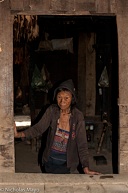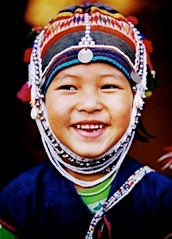tribes / ชนเผ่า
The Akha People
The Akha speak Akha, a language in the Loloish (Yi) branch of the Tibeto-Berman family. Akha language is closely related language to the Lisu and it is conjectured that the Akha once belonged to the Lolo hunter tribe people that once ruled the Baoshan and Tengchong plains before the invasion of the Ming Dynasty (A.D 1644) in Yunnan, China. (1)
According to the Akha Heritage Foundation:
“The Akha have been maligned as slash and burn migratory farmers. This is not true. Stable village sites are many years at the same location, the land being farmed in a circle around the village for years and years on end, rice terraces slowly creeping up from the bottoms of the watershed. Forced relocations and wars have resulted in the Akha villages being relocated over and over, leaving them no option but to cut and farm in the new location. Distant relatives of the Akha, the Hani, in China, are regarded as ‘The terrace builders’ for having used terraces at the same locations for centuries in a fine tuned harmony to get along with what supplies them with food.” (3)

“The Akha have been maligned as slash and burn migratory farmers. This is not true.”
References
-
1.Wikipedia, “Akha People”, http://en.wikipedia.org/wiki/Akha_people (retrieved 2/15/2014).
-
2.Wikipedia, “Hill tribe (Thailand)”, http://en.wikipedia.org/wiki/Hill_tribe_(Thailand) (retrieved 12/15/13).
-
3.The Akha Heritage Foundation, “The Akha Belief and Life System”,
http://www.akha.org/content/aboutakhalife/akhabelieflife.html (Retrieved 2/15/14).
Proud young Akha girl. Photo by Steve Murray


Akha smoker. Photo by
G. Richardson
Akha woman in doorway.
Photo by Nicholas Mayo
Kāfæ Mūl Cĥāng™ is a project of Elephant Relief. Website copyright © 2016